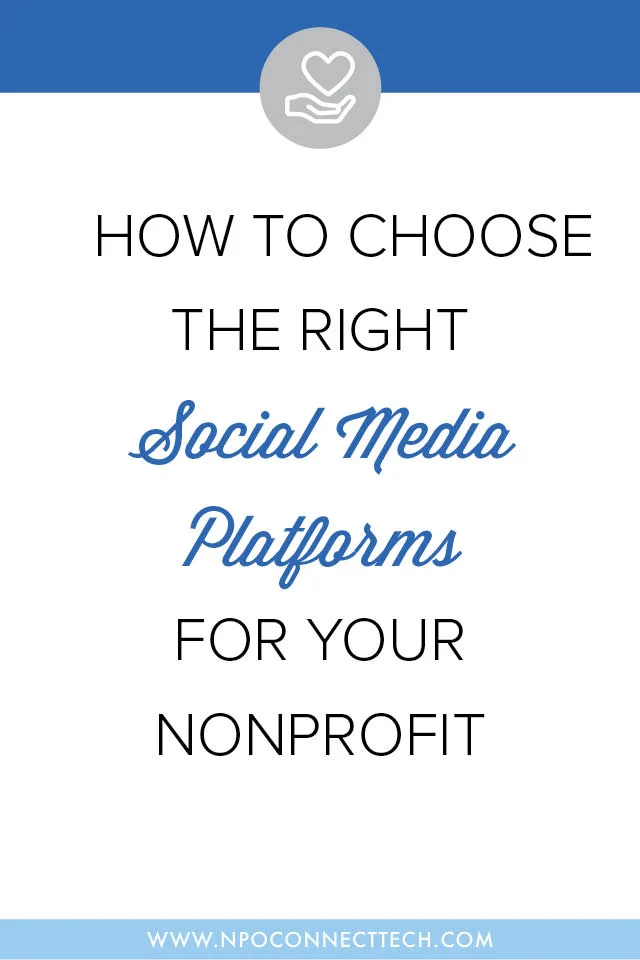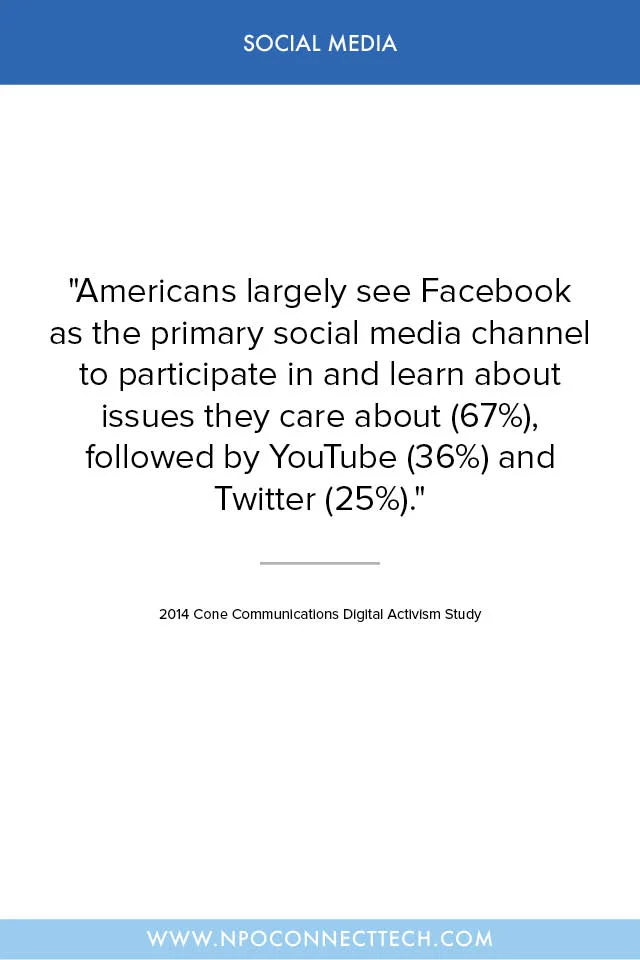There are hundreds of social media platforms out there, and more seem to pop up every single day.
But here’s the thing. Your nonprofit organization does not need to be on all of them. It doesn’t even need to be on ten of them. In fact, when your organization is still new to the big, wide world of social media, we encourage you to choose three.
That’s right: three social media platforms. Max. The only requirement? Commitment. Pick your platforms and master them. Consistency breeds trust, and you don’t want to risk abandoning a slew of platforms after one month because you don’t time for it. Create your strategy, build your systems, find and engage with your audience on a regular basis. Then you can branch out to additional platforms that make sense for your brand and your audience.
But with all of those options, how do you choose which platforms are the right ones to invest your limited resources in?
Step one: Consider your organization’s capabilities
How many staff members will be contributing? How much time will they be able to commit?
If one person is dedicating ten hours a week, it might be best to choose one platform that is easy to maintain and has the greatest potential to reach your audience. If you have a team of three dedicating 30 hours a week altogether, you may be able to commit to three different platforms that require a mix of content formats.
What skill sets or personality strengths are they bringing to the table?
Identify those skills or qualities that will be applied to your social media efforts. If you have a talented writer, platforms that demand more text content may be the right choice. If, on the other hand, you are overrun with incredible photographers and videographers, visual content platforms will be easier to approach.
Step two: Identify your target audience demographics
Think about the individuals you’re trying to reach. How old are they? Where do they live? How much access do they have to the Internet? What are they interested in? What kind of content do they seek out?
This is how you discover where your audience “hangs out” online. If they love to take and share pictures or have a passion for food and cooking, they may be spending all of their time on Instagram and Pinterest. If they are business professionals with a penchant for networking, they may prefer to check in on LinkedIn.
Step three: Learn all about the top platforms
That means Facebook, Twitter, Instagram, Youtube, LinkedIn, SnapChat and Pinterest. Don’t worry, we’re here to provide some extra guidance in this arena.
As the most frequently used platform regardless of demographics, it has a lot of power. Our favorite thing about Facebook is the Insights feature. Insights will give you a detailed look at how your is content performing, who your audience is and when they are active.
Our second favorite feature? Ads. Facebook offers the capability to run powerful paid advertising campaigns, and having a well-populated page (and an existing audience) when you decide to take advantage of that feature is certainly a boost.
Twitter is great for keeping up with your audience in real time. The feed moves very quickly, so sending multiple tweets a day is encouraged. This means writing more posts, but they can be brief!
Certain charities are able to run donation campaigns in their followers’ feeds, which has proven to be an efficient way to fundraise, especially for urgent issues.
As a business-focused platform, LinkedIn offers a lot of opportunity for networking and marketing with donors and volunteers. Organization pages can post volunteer and board member opportunities as well as job listings.
One big benefit that LinkedIn has going for it is the LinkedIn for Nonprofits portal: nonprofits.linkedin.com.
Pinterest is very useful for selling physical products and for content marketing. Most users get on this platform to collect and organize things like e-commerce products, quotes, interesting articles, and recipes.
If your organization produces a lot of blog posts or fun event images, Pinterest is worth a look.
Instagram is one of the most rapidly growing platforms and is particularly effective for raising brand awareness. It is much more community and authenticity focused than other platforms, as you cannot schedule content outside of the application and cannot include active links anywhere but the profile biography.
Make sure you have high-quality images to draw on if you opt to use Instagram!
YouTube
As you probably already know, Youtube is a video sharing network currently owned by Google. The YouTube Nonprofit Program offers branding capabilities, increased uploading capacity, and call-to-action overlays. There have been over 4.6 billion views of NGO videos since the start of the NP program, which is a significant selling point.
Video content is quickly growing in popularity but requires a distinct skill set to create.
Snapchat
Snapchat lets users share quick video clips or a compilation of still images that are only viewable for 24 hours. It’s ideal for telling behind-the-scenes or live stories from a first-person perspective. It is primarily an entertainment platform, not a PSA platform – so have fun! And plan to have a narrator who’s not afraid of selfies.
Now, it’s time to do a little research on your end. Look at recent demographic overviews for these platforms, see what other similar organizations are using successfully, and take notes.
Once you have picked your platforms...run, don’t walk and reserve your name on as many platforms as possible. You never know where you’ll end up branching out! If you can’t get it exactly, try incorporating underscores or periods, but make them all consistent usernames so that your audience can find you. Switch any that you’re not using right away to “private”.
When you’re ready to start adopting new platforms, experiment with them privately and come up with a strategy before you start using it publicly. Adopting early shows innovation and creativity, but your brand reputation is more valuable. Take your time!


